This wonderful Cornish workshop and museum is dedicated to the legacy of studio pottery trailblazer Bernard Leach
Discover the world of the Van de Veldes
Discover the world of the Van de Veldes
9 Mar 2023
This father and son artist duo founded a key genre in British painting. So why don’t we know more about them? Curator Dr Allison Goudie reveals their story
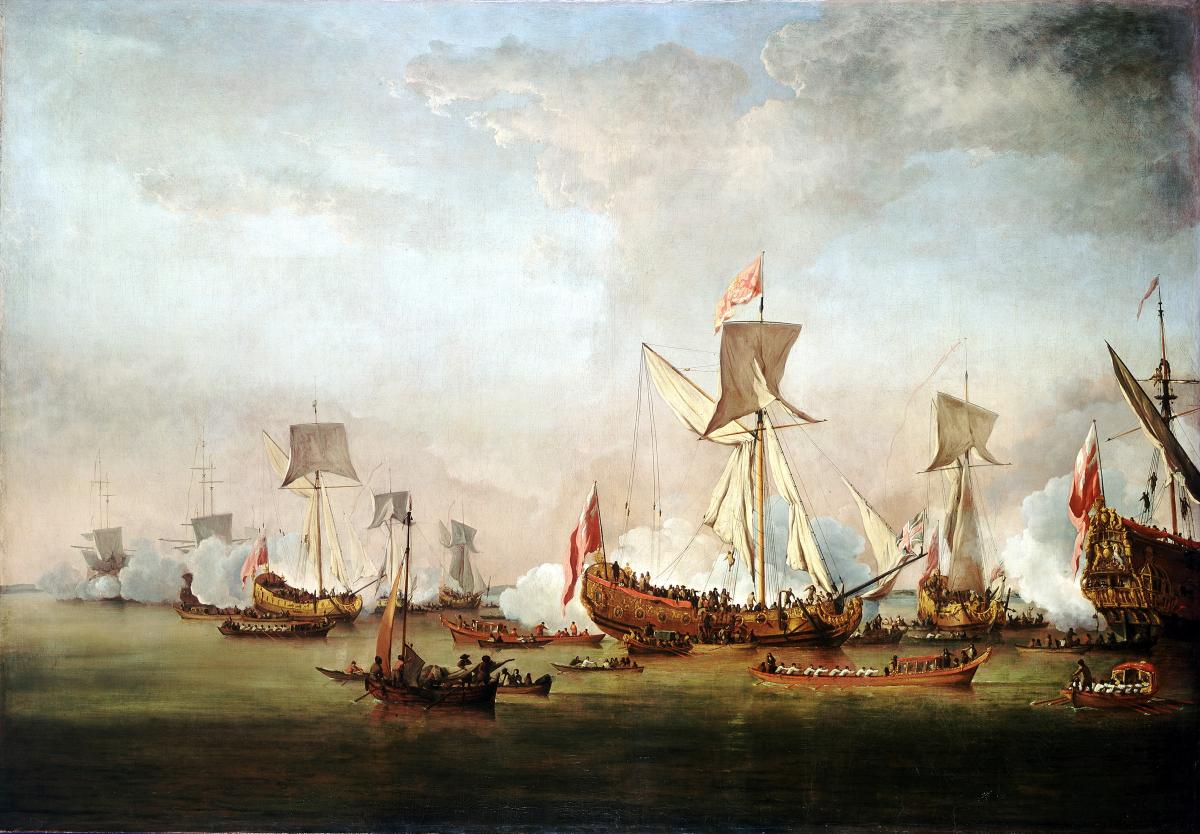 The Departure of William of Orange and Princess Mary for Holland, November 1677, by Willem van de Velde the Younger. Image: © National Maritime Museu
The Departure of William of Orange and Princess Mary for Holland, November 1677, by Willem van de Velde the Younger. Image: © National Maritime Museu
Who were the Van de Veldes?
Willem van de Velde the Elder and his son, Willem the Younger, were the leading marine painters of 17th-century Europe. They had a thriving studio business in Amsterdam in the 1650s and 1660s, with an international clientele. In the winter of 1672–73 they emigrated to England, amid the fallout of the so-called ‘Disaster Year’, when Amsterdam was effectively besieged by the French and the English, causing the economy – and art market – to collapse.
In a bid to boost local industries, King Charles II issued an open invitation to Dutch citizens to relocate to England. It is unclear whether the Van de Veldes’ move was in response to this general invitation, or if there was a more specific one from the royal family. Either way, Charles incentivised them to stay, paying them each an annual salary of £100 and giving them space in the Queen’s House at Greenwich for their studio.
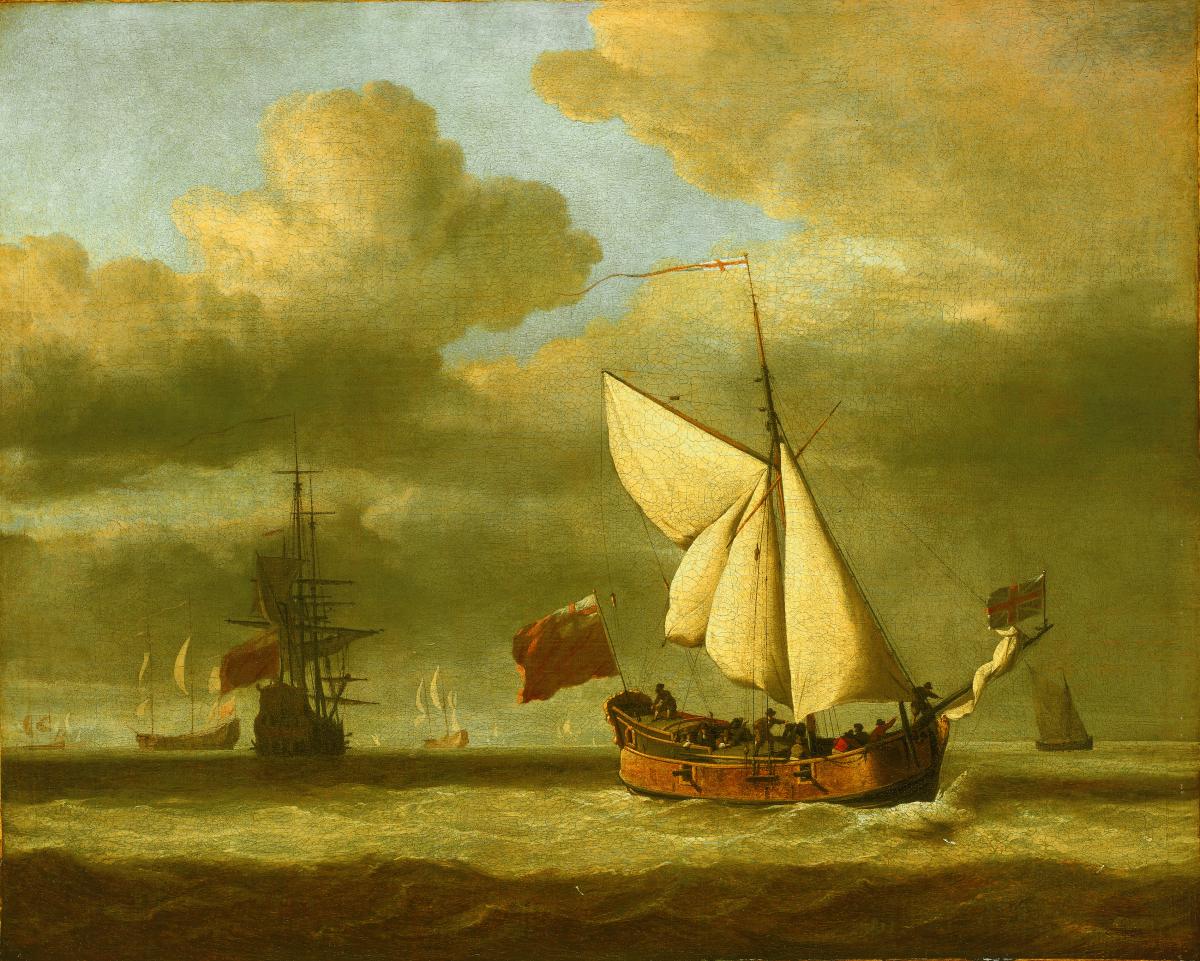 The Royal Escape Close-Hauled in a Breeze, by Willem van de Velde the Younger. Royal Escape was the ship previously known as the Surprise, in which Charles II had escaped to France after his defeat by Cromwell in 1651. Image: © National Maritime Museum
The Royal Escape Close-Hauled in a Breeze, by Willem van de Velde the Younger. Royal Escape was the ship previously known as the Surprise, in which Charles II had escaped to France after his defeat by Cromwell in 1651. Image: © National Maritime Museum
Why are they important in the history of art?
While the name ‘Van de Velde’ no longer enjoys the fame it once did, the Van de Veldes are literally a household name in the sense that their impact is still felt in many a British interior.
This is because the duo established the taste for marine painting among the British. Most seascapes or paintings of ships we encounter in domestic and institutional interiors today are in one way or another indebted to their work.
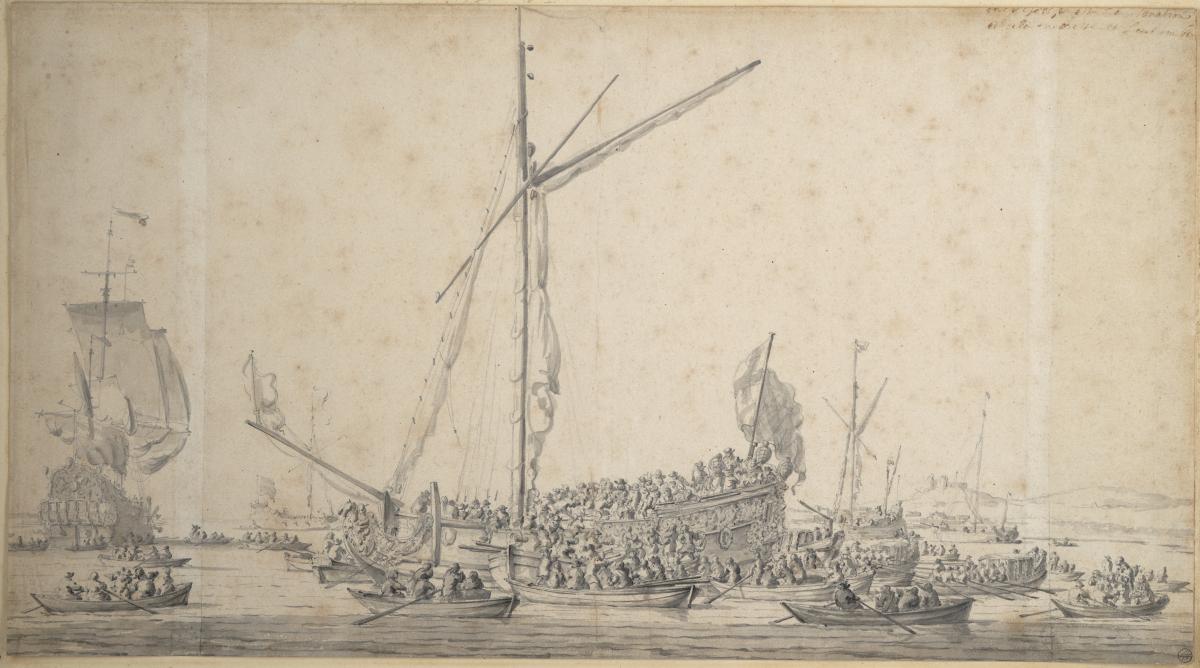 A drawing of the embarkation of William of Orange and Princess Mary at Margate in November 1677 on their return to Holland after their marriage, by Van de Velde the Elder. Image: © National Maritime Museum
A drawing of the embarkation of William of Orange and Princess Mary at Margate in November 1677 on their return to Holland after their marriage, by Van de Velde the Elder. Image: © National Maritime Museum
Who did they inspire?
The Van de Veldes inspired generations of British painters who came after them. Only with JMW Turner did British marine painting step out from their shadow. Even Turner, however, measured himself against the Van de Veldes, creating work that engaged actively with the precedent they set. He proudly owned drawings by them and is said to have claimed that the Van de Veldes’ work ‘made me a painter’.
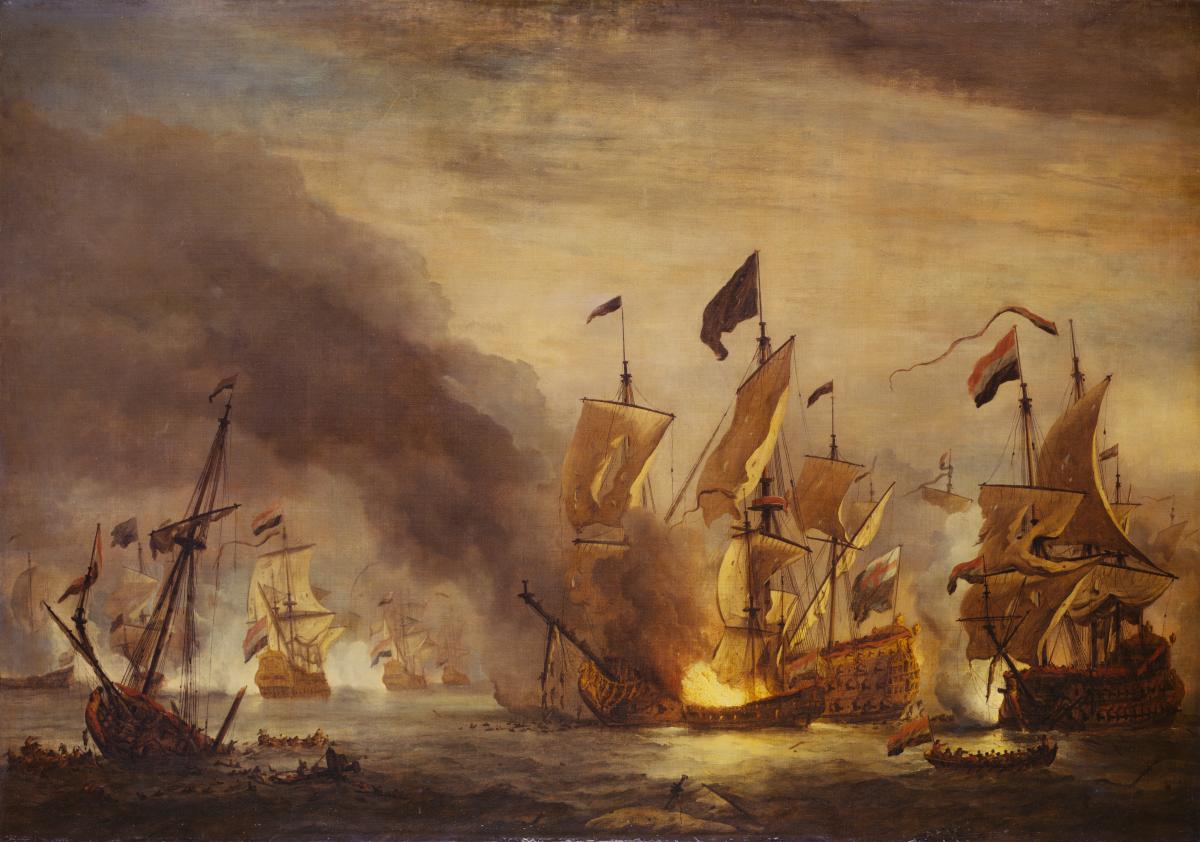 The Burning of the Royal James at the Battle of Solebay, 28 May 1672, by Van de Velde the Younger. Image: © National Maritime Museum
The Burning of the Royal James at the Battle of Solebay, 28 May 1672, by Van de Velde the Younger. Image: © National Maritime Museum
What did they create – and how?
The Van de Veldes’ fame – and the claim to authenticity for which their work was prized – had much to do with the Elder’s practice of sailing out with the Dutch fleet to witness and record sea battles first-hand. Rough sketches created out on the waves were later worked up into exquisite drawings teeming with detail. These in turn formed a vast catalogue of subjects that were used to
create finished works. Van de Velde the Younger excelled in colour paintings in oil, exploring the effects of light on the watery world, while his father specialised in ‘pen paintings’, highly detailed monochrome pictures drawn in ink on canvas or panel supports.
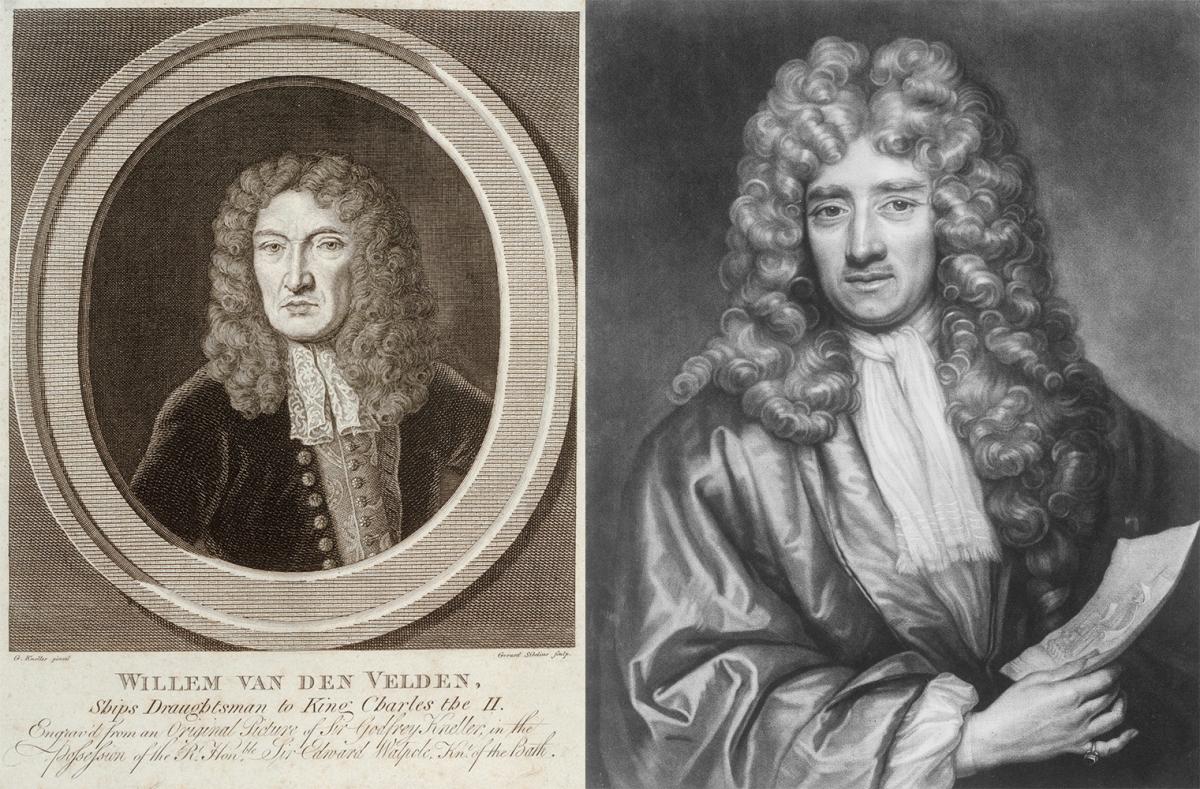 Left: Willem van de Velde the Elder, by Sir Godfrey Kneller, print by Gerard Sibelius; right: Willem van de Velde the Younger, by Sir Godfrey Kneller, print by John Smith. Both images: © National Maritime Museum
Left: Willem van de Velde the Elder, by Sir Godfrey Kneller, print by Gerard Sibelius; right: Willem van de Velde the Younger, by Sir Godfrey Kneller, print by John Smith. Both images: © National Maritime Museum
What lesser-known facts exist about the duo?
The Van de Veldes were among the most prolific draughtsmen of the 17th century. Their archive of drawings – covering intricate ship portraits, rapid compositional sketches and even instructional drawings for assistants – would have been their most valuable studio asset, providing the basis for endless paintings. More than 2,500 drawings by them are preserved in public collections today. We are lucky at Royal Museums Greenwich to have some 1,400 in our collection. Few collections can tell us as much about how a 17th-century artist’s studio functioned – marine artists or otherwise.
Explore an art story every month with our ‘Instant Expert’ email; sign up at theartssociety.org/signup
SEE
The Van de Veldes: Greenwich, Art and the Sea; until 14 January 2024;
The Queen’s House, Greenwich; rmg.co.uk/van-de-velde
About the Author
Allison Goudie
Allison is curator of art (pre-1800) at Royal Museums Greenwich and is curator of the exhibition The Van de Veldes: Greenwich, Art and the Sea
JOIN OUR MAILING LIST
Become an instant expert!
Find out more about the arts by becoming a Supporter of The Arts Society.
For just £20 a year you will receive invitations to exclusive member events and courses, special offers and concessions, our regular newsletter and our beautiful arts magazine, full of news, views, events and artist profiles.
FIND YOUR NEAREST SOCIETY
MORE FEATURES
Ever wanted to write a crime novel? As Britain’s annual crime writing festival opens, we uncover some top leads
It’s just 10 days until the Summer Olympic Games open in Paris. To mark the moment, Simon Inglis reveals how art and design play a key part in this, the world’s most spectacular multi-sport competition



